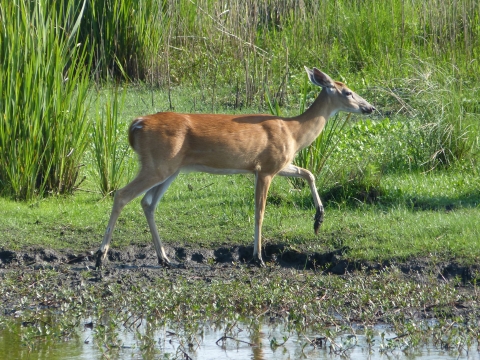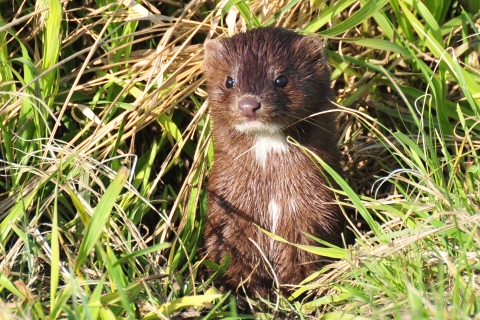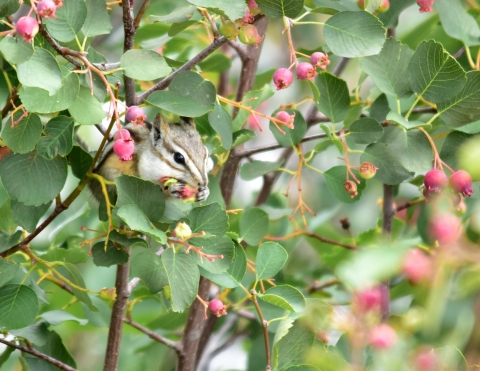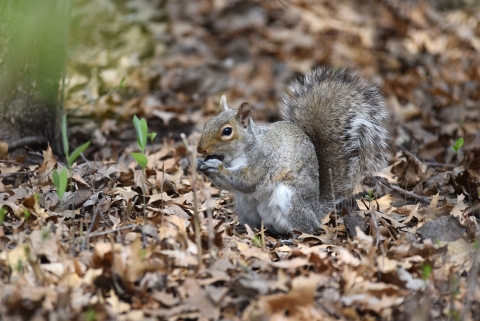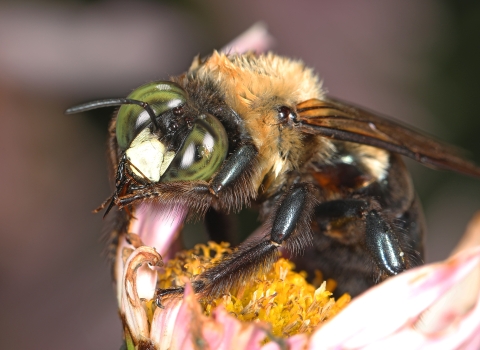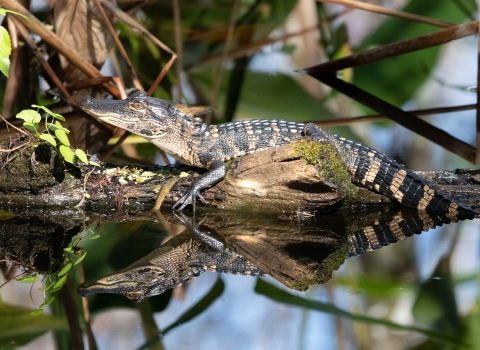Humans are moving further and further into places where animals once called home. Mammals of all shapes and sizes benefit when they can find safe and healthy habitat around the places where we live. We will decrease our impact and help mammals survive, and even thrive, by providing them with safe passage and sanctuary within our urban landscapes.
Create a water feature in your yard to provide a home and drinking water for wildlife.
Frogs, turtles, and salamanders will thank you. Deer, raccoons, squirrels, and other mammals will appreciate the fresh water too! While providing a valuable water source, you will also offer a breeding place for bugs like damselflies, which can help control mosquitoes and provide a great food source for bats and birds!
Logs, dead snags, and rock features, oh my!
Downed logs and dead snags provide bountiful habitat for all kinds of wildlife. Bats sleep during the day behind loose bark or inside cavities. Small mammals find shelter inside cavities too. If well planned and maintained, they can also be a visually pleasing feature to your landscaping. Additionally, installing a rock feature in your yard will create a cost-effective, attractive addition to your landscaping, while providing a home for all sorts of creatures including small mammals.
There’s no need to mow everything!
One of the easiest and most cost-effective ways to create a wildlife friendly habitat is to leave sections of your lawn un-mowed or create a “wild” zone. Many animals, including small mammals, use a tall grass or plant patch to hide and travel safely through your garden. “Wild” areas don’t need to be unsightly; try planting some native grasses or wildflowers, adding a rock border, or give it some character by adding a sign explaining to passersby why your garden is “wild.”
If you live in fire-prone areas, make sure you follow Firewise Recommendations.
Native plants are a beautiful and easily cared for garden addition.
Their adaptations to the Northwest environment will save you money and effort on fertilizer, pest management, watering, and soil erosion. Pollinators appreciate the familiar blooms, and animals like birds and small mammals love to feast on berries late into the winter months. Many local nurseries work in partnership with backyard habitat certification programs to offer discounts on native plants.
To learn more visit: OSU Extension Native Planting Resources
Leave leaf litter and provide the damp habitat many creatures need!
In turn you will help bugs, like worms and centipedes, and amphibians, like frogs and salamanders, stay safe and happy. Birds and bats love eating the many bugs that live in the leaves. The leaves also provide hiding places and food for small mammals.
Outdoor cats are one of the biggest dangers to native wildlife!
Billions of wildlife species around the world are killed each year by free roaming cats, including small mammals. Native wildlife, like coyotes and raccoons, can also put your outdoor cat in harm’s way. To protect native wildlife and your cat, keep your furry friend indoors or build a protected catio.

